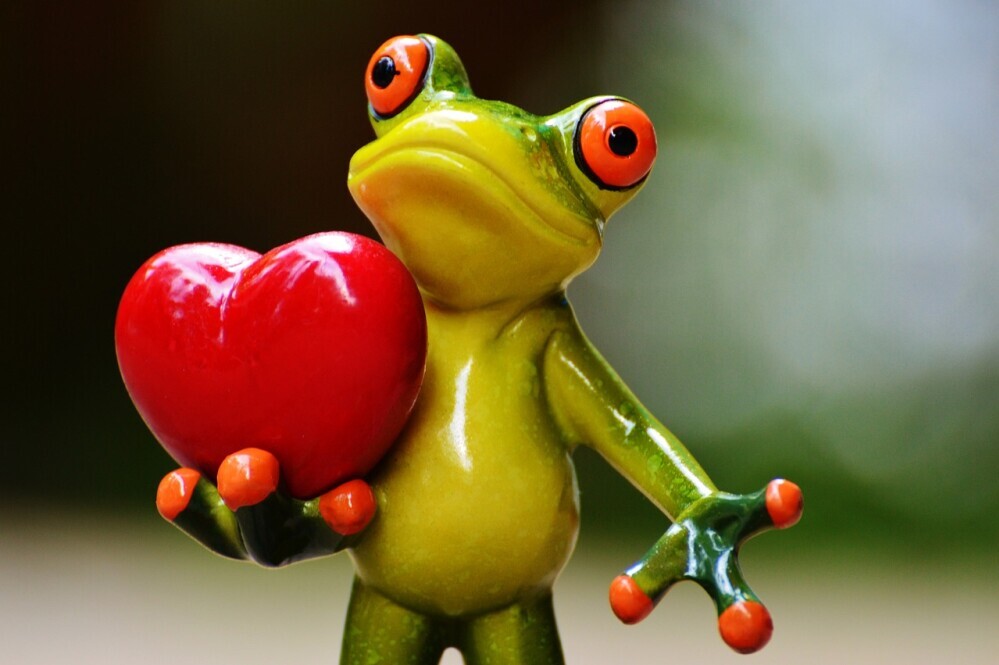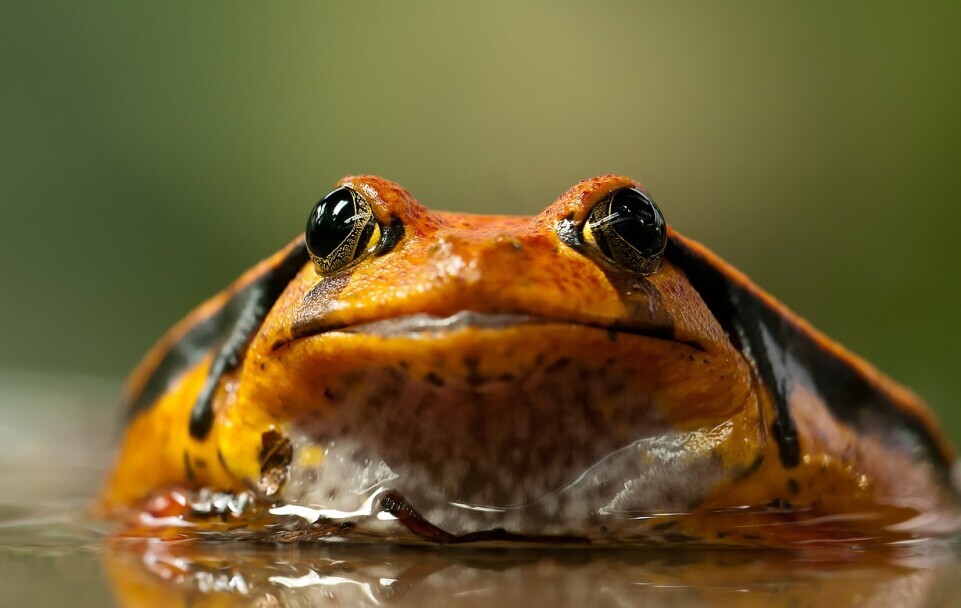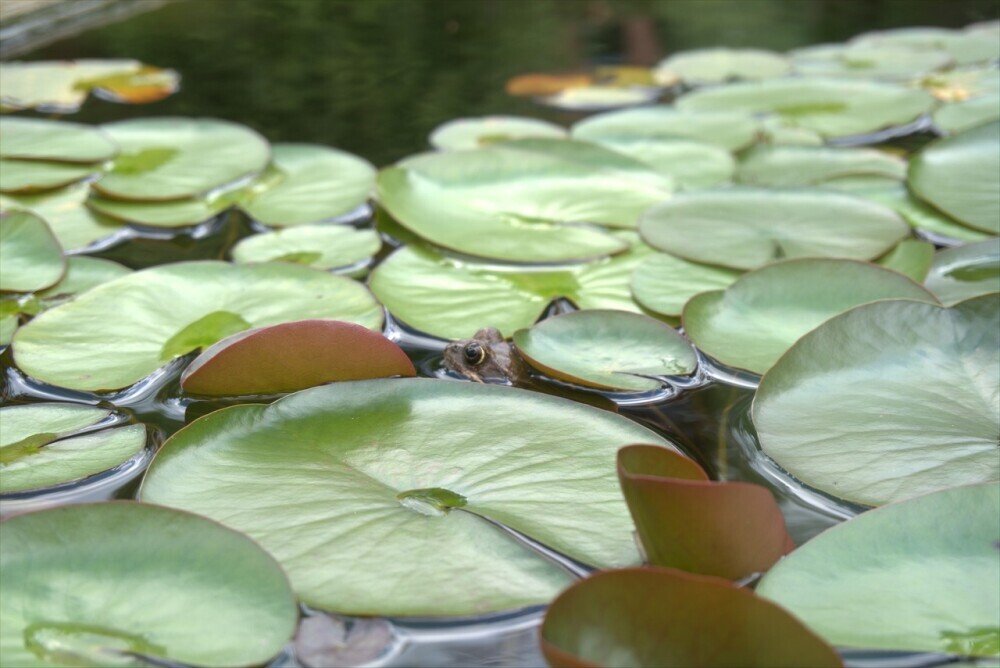Frogs have this amazing knack for sensing even the slightest changes in their surroundings. It’s like they’ve got an early warning app built right into them. If you see a drop in frog populations, it’s often a red flag that something’s up environmentally. Their sensitivity makes them standout bioindicators, meaning their health reflects the health of their habitat.

Think about the changes our world has faced in recent decades. In places where pollution or habitat destruction happens, frogs are among the first affected. Their thin skin doesn’t just make them feel all the feels hop-wise, it’s super permeable which means the chemicals and pollutants sneak right in. This makes them particularly vulnerable but also incredibly insightful indicators.
There are actual moments in history where frogs have helped scientists catch environmental shifts early on. For instance, researchers have used declining frog populations to spotlight areas overrun with agricultural runoff or contaminated with heavy metals. A famous example is the amphibian decline in Monteverde Cloud Forest in Costa Rica, which was one of the first signs of changing climates in that region. Their rather dramatic downturn sounded the alarm on global warming that had started impacting that ecosystem.
So, what biological tricks do these frogs have that play into this whole “indicator” thing? Their life cycle is intimately tied to water, so anything amiss in aquatic environments directly impacts them. Plus, their über-sensitive skin and eggs virtually scream environmental changes, marking them as an invaluable resource for scientists trying to assess ecosystem health.

Frogs and Their Global Distribution
Frogs are quite the jetsetters, in an amphibian kind of way. You’ll find them on every continent except Antarctica, thriving in rainforests, deserts, and urban backyards. This wide distribution means different species adapt to local climate quirks and landscapes, creating unique ecological dynamics everywhere they croak.
It’s fascinating how well frog populations mirror the ecological health of their regions. High diversity often points to a rich, balanced ecosystem, while dwindling numbers can signal trouble brewing beneath the surface. For instance, in rainforests like the Amazon, a packed house of frog species shows a bustling, healthy environment. Their absence, though? That might hint at larger issues like deforestation or pollution.
Every frog species has its own special role in the local ecosystem. From tree frogs chilling way up in the canopy to those tiny terrestrial ones mucking about on the forest floor, each adds its own bit to the ecological puzzle. This makes them perfect as biodiversity ambassadors, showcasing a region’s environmental richness or distress.
By tuning into what’s happening with frog populations, scientists get a closer look at how entire ecosystems are faring. It’s kinda like looking at someone’s overall health through their skin complexion; a glowing complexity often means good stuff inside. Frogs are like that skin for ecosystems, offering vital clues to the environment’s hidden health dynamics.
Environmental Threats Highlighted by Frog Population Declines
Frog populations facing sudden drops are often nature’s SOS calls. When amphibians start to disappear, it’s usually a sign that something’s having a negative effect on their environment. Pollutants like pesticides and heavy metals can get into streams and ponds, creating significant challenges for frogs. These substances don’t just mess with their immediate health; they can cause long-term harm to entire local species.
Climate change also rears its head, wreaking havoc on frog habitats by altering weather patterns. Shifts in rainfall can dry up the ponds where frogs breed, while temperature spikes can affect their reproduction cycles. These changes disrupt the delicate balance that sustains frog life.
Many regions have been spotlighted through the studies of declining frog populations. For example, in parts of Southeast Asia, deforestation for palm oil plantations has led to habitat destruction. Without their forest homes, numerous frog species face extinction. This kind of data helps highlight the urgency needed in preserving vital ecosystems.
The decline in frog populations can serve as clear signals of ecosystem distress. Addressing the spotlighted threats isn’t just about saving frogs; it’s about realizing the broader implications for environmental stability and taking action to remedy what’s gone wrong. By identifying key issues frogs face, we can prioritize ecological threats needing immediate attention.

The Science Behind Frogs’ Sensitivity to Environmental Changes
Frogs are equipped with these incredible biological features that make them ultra-sensitive to changes around them. Their skin, for example, is like a bio-sponge—it absorbs things directly from the environment, meaning pollutants and toxins can sneak into their systems without much effort. This feature highlights why pollution impacts them before it shows up in other parts of the ecosystem.
When frogs lay eggs, it’s not just another day in the muck. These eggs aren’t just waiting to hatch; they’re also incredibly vulnerable to chemicals and changes in water quality. This sensitivity gives them—and us—a short preview if something harmful is happening in their watery neighborhoods.
Recent scientific research keeps uncovering more about how frogs respond to pollutants. These studies help us understand how frogs process different environmental toxins on a biochemical level. Their reactions often mirror what goes unseen, providing data that’s crucial for developing methods to monitor environmental health.
Scientists look to the subtle shifts in frog behaviors or physiology as indicators of larger ecological shifts. Whether it’s changes in their calls or the physical texture of their skin, each variation tells its own story, sharing insights into the health of their habitat.
Frogs’ Role in Ecosystem Services
Frogs are major players in the food chain, balancing ecosystems by being both hunter and hunted. They munch on pests like mosquitoes, helping keep insect populations in check. This not only benefits their immediate environment but also aids agriculture by minimizing crop-damaging pests.
Frogs themselves are a food source for many animals. Birds, snakes, and even mammals rely on them for sustenance, making frogs vital for the continuity of the food web. Their presence maintains the balance of predator-prey relationships, which is essential for a stable ecosystem.
Beyond just hopping around and contributing to the food web, frogs help with soil health. Their foraging leads to soil aeration, and through their movements and waste, they contribute nutrients back into the earth. This not-so-glamorous part of their role ensures soil fertility, impacting plant growth and the overall health of the habitat.
Appreciating frogs in these roles highlights why conserving their populations is so important. Losing them isn’t just about missing out on their ribbits; it could mean a hit to agricultural productivity and a ripple effect across various species. Understanding this interconnectedness helps prioritize environmental protection strategies.
Conservation Efforts: Protecting Frogs and Their Habitats
Frog conservation is on the rise thanks to dedicated global initiatives aiming to safeguard these vital amphibians. Organizations are stepping up with programs that focus on habitat preservation, pollution reduction, and curbing climate change effects. From breeding programs to protected areas, these efforts are crucial to maintaining frog populations.
Reviving damaged ecosystems has become a hobby for conservationists, employing strategies like restoring wetlands and reforesting areas. Such measures don’t just help frogs—they benefit entire ecological systems, promoting diverse and healthy habitats. These strategies show that protecting frogs often goes hand-in-hand with overall environmental gains.
If you’re wondering how to pitch in, individual actions matter a lot more than you might think. Simple changes, like opting for chemical-free gardening or reducing water runoff with rain barrels, can help maintain cleaner waterways. Spreading awareness in local communities about frogs’ environmental roles also strengthens conservation efforts.
A cohesive approach between scientists, conservationists, and everyday folks prompts a collective drive toward ensuring healthy ecosystems. This team effort is not just about saving frogs; it’s about promoting a healthier planet for all species, frogs and humans alike.
Implications for Future Research and Policy Development
Frogs, as nature’s environmental barometers, spotlight key issues that must shape future research agendas and policy developments. They provide a unique lens through which scientists can observe the intricate dance between living organisms and their habitats.
Current policies can take a cue from research involving frogs to craft guidelines that reflect realistic environmental concerns. Tighter regulations on pollutants, improved habitat protection laws, and integrated water management can all draw from insights gained through frog studies.
Innovative approaches are making waves in research, seeking to blend traditional scientific inquiry with cutting-edge tech. Think bio-monitoring devices and advanced environmental sensors, inspired by the data derived from our amphibian friends. These tools could revolutionize how we track and respond to ecological changes.
Future research isn’t just about frogs; it’s a peek into the larger environmental narrative. Understanding their challenges helps pave the way for broader ecological conservation efforts. Policies that arise from these insights can have far-reaching implications for global environmental health, affecting both biodiversity and human well-being.
